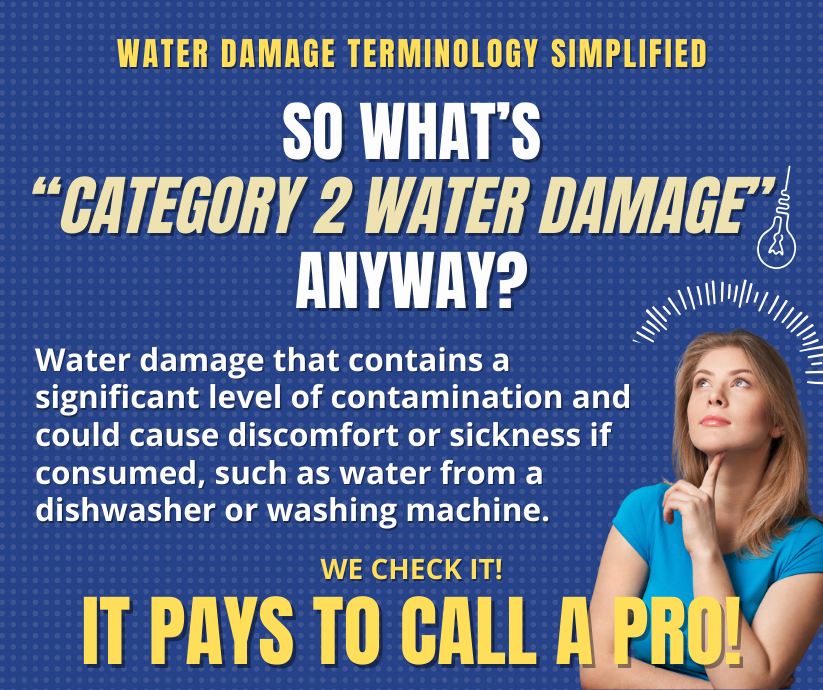|
Beware of Mold!
Mold is an eyesore, a destroyer of building materials, and a potential health hazard. There are several good reasons to beware of mold! Mold gets started by water intrusion or some moisture issue. Mold is a living substance and needs moisture, air, and a food source to flourish. Left unchecked, mold contamination can go from bad to worse and require significant reconstruction. Identifying and recognizing mold Molds may be manifested in various forms, but molds generally are evidenced by an unpleasantly distinctive smell and discoloration. The most common signs of mold include:
Human health risks Mold exposure can result in several health complications, especially for people with respiratory illnesses, allergies, or immuno-suppressed systems. Most health complications that may arise from molds may include health issues among individuals like allergic responses, attacks to asthmatic conditions, and other respiratory complaints. Long-term exposure may worsen the symptoms and result in several critical health conditions. Mold prevention Mold should be prevented to maintain a healthy home effectively. Here are some strategies to effectively prevent mold:
If you do find mold, clean any visible mold in small areas with water and detergent. However, it is always advisable to hire a professional mold remediation company for larger contaminated areas or if the ventilation system might be infected. Tools and training allow professionals to remove the mold without any risk to you. After all, it pays to call a pro! How Disaster Restoration Pros Work
The devastation to homes and businesses following a disaster—such as a flood, fire, or severe weather event—can be overwhelming. Disaster restoration companies step in, providing the needed services to help individuals and communities recover and rebuild. These specialized firms are equipped to handle the complexities of a disaster’s aftermath, ensuring the quick restoration of affected properties. But have you ever wondered how they operate besides what you see? Rapid response and assessment The first step in the operation of disaster restoration companies is a rapid response. Time is critical when dealing with disaster aftermath, as the extent of damage can quickly go from bad to worse. Restoration companies typically offer 24/7 emergency services, ensuring they can be onsite immediately after being contacted. Upon arrival, the experts conduct an initial assessment to evaluate the damage and formulate a plan of action. Water and fire damage restoration While most disaster restoration companies handle virtually any issue, such as mold remediation, they focus primarily on floods and water-related disasters. They extract water as quickly as possible using specialized equipment. Following water removal, the area is dried using dehumidifiers and air movers to prevent mold and mildew growth, which can pose serious health risks. In the case of fire damage, restoration companies secure the structure, remove debris, and address soot and smoke residue. This process is delicate and complex, as different materials absorb smoke differently and might require specific cleaning agents and techniques to prevent further damage. Reconstruction and final restoration Once the property is cleaned and stabilized, the next phase is reconstruction. This step is important for restoring buildings' structural integrity and restoring them to their pre-loss condition. Additionally, many companies provide content restoration services, restoring furniture, electronics, and personal items affected by the water or fire event. This service can help salvage valuable or sentimental items, reducing the overall impact of the disaster. Continuous communication and support Throughout the entire process, effective communication remains a priority. Restoration companies keep property owners informed, from initial assessments to final walkthroughs. This transparency helps alleviate the stress for those affected and ensures they know the progress. Disaster restoration companies are crucial in helping individuals and communities recover from catastrophic events. When you need their help, they are there for you. After all, it pays to call a pro! How Evaporation Works
The U.S. EPA says, “Evaporation is the process that changes liquid water to gaseous water (water vapor). Water moves from the Earth’s surface to the atmosphere via evaporation.” Is there more to it? For your home, yes. While there is science to evaporation, and entire industries are dedicated to studying and implementing the science, when things get wet, such as from a failed sump pump, a broken pipe, or water intrusion issues, understanding evaporation and using that knowledge is essential. If you get light water damage, such as something covering a few feet, you will probably attempt to dry it yourself. Whatever you do, make sure you get it completely dry. This is where the science comes in. Evaporation is increased with both air flow and dehumidification. You may have a small dehumidifier, but there is no doubt you have a few fans. By moving air across the wet surface and relying on a dehumidifier to remove the water from the air, you increase evaporation. However, removing water from a surface and not dehumidifying the air means it will take everything longer to dry. When water damage occurs, it’s critical to work on removing the moisture and restoring property right away. This is tough to do without the right equipment, not even considering the time involved. Let the pros do it. If your home has a basement, you probably have moisture. You need to manage that. Opening windows isn’t usually a good option. Installing effective dehumidifiers is one of the best ways to keep a basement dry all the time. You can increase their effectiveness with airflow to move the air around. If your basement walls are constantly wet, it would be smart to have an inspection by an expert who specializes in dry basements. Shop around and look at the reviews. This could get expensive but could also be necessary. Professional contractors use professional tools for almost all water damage or other moisture issues. They have specialized equipment, such as air movers and dehumidifiers, and they have methods to monitor the drying process. These professionals create optimal conditions for evaporation, including controlled temperature, airflow, and humidity levels during the job. So call your favorite restoration company. You don’t want more damage to occur, and you don’t want mold to grow. After all, it pays to call a pro! |
Disaster Recovery Pros Clearwater FL
CALL: 727-330-2340 Archives
June 2024
Clearwater FL Cleaning OutPost Site
|
Would you like to get your own OutPost Site? Cleaning and restoration firms who are MarketingZoo.com members get
|
CleaningOutpost.com Directory of Cleaning & Restoration Businesses is a service offered by MarketingZoo.com
Copyright 2015 Thinkshortcut Publishing, LLC
Copyright 2015 Thinkshortcut Publishing, LLC



 RSS Feed
RSS Feed
